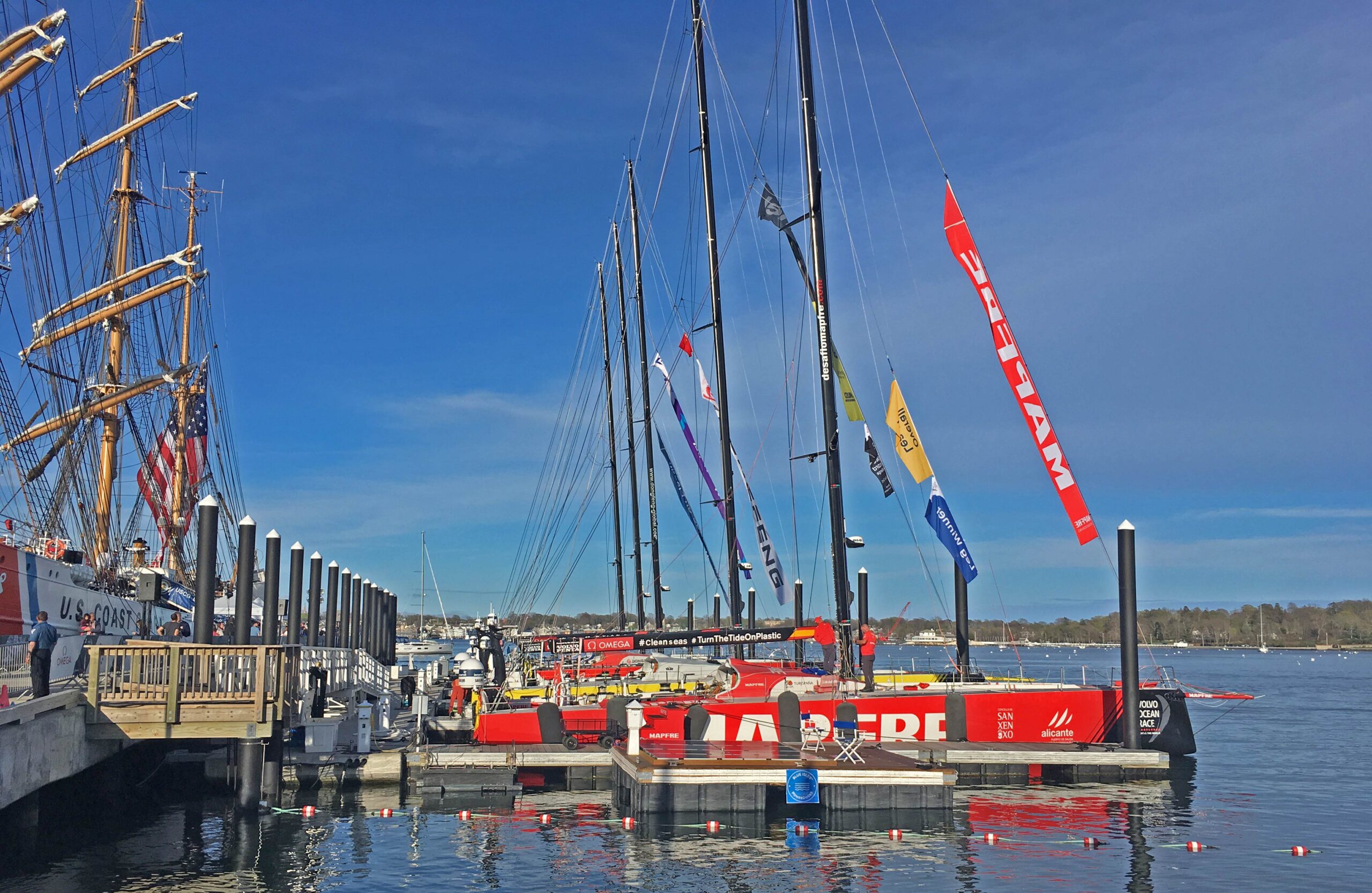Adapted from article by: James Scanlon
The Volvo Ocean Race made a dramatic arrival into Newport, RI Tuesday May 8th, capping a 5700 nautical mile leg from Brazil. After finding themselves in 5th place with 300 miles remaining in the race, light winds approaching Newport resulted in a compression of the fleet, with Dongfeng, Vestas, Brunel and Mapfre locked in a tight battle for the lead. With only 500 meters remaining, a puff propelled Mapfre across the line, Brunel finishing only one minute behind.
The Volvo Ocean Race
For four decades The Volvo Ocean Race has been one of the most grueling events in sports. The race is scored based on cumulative results from the 11 offshore legs. Inshore races are used only in the event of a tie breaker. This year has been a particularly severe edition of the Volvo, according to Vestas skipper Charlie Enright. Sustained average winds were 40 knots and regularly gusting to 60. Particularly savage conditions lead to several breakdowns and two fatalities. One crew member washed overboard and one Chinese fisherman was fatally struck in a collision near Hong Kong between Vestas and a commercial fishing boat.
The one design
Refitted after it’s 2014 debut, this years race is being sailed in The Volvo 65, the brainchild of Bruce Farr. The boat is a less expensive, equally high performance one design alternative to the Volvo Open 70. Besides keeping costs down, the one design ensures results are determined on the water by sailors and not by designers. The 65 foot carbon hull is powered by a 468 square meter upwind and 578 square meter downwind sail plan. Boats are equipped with Volvo Penta “S Drive” diesel engines and two blade folding Gori Race propellers. (The use of engines are prohibited during the race.)
The GORI Race Propeller
The GORI race was an obvious choice for the uncompromising, lean design as it results in zero newtons of drag. GORI produces one knot increase in sailing boat speed and improves the performance of the boat’s foils. For the Itajai to Newport leg, this minor increase in speed can make all the difference in competition. While the two blade Gori Race offers the least drag, the 3 blade Gori for cruising boats still only produces 1.4 newton’s of drag. This while also providing optimum thrust when under power. Competing folding propellers create between three and ten times the drag and fixed propellers create astronomically more drag.
Ecological Awareness
This years Volvo is raising awareness of the ecological disaster from the accumulation of plastic products in the ocean. The 7 boats racing through remote areas collect data on plastic particle density, CO2 concentration, algae content and ocean acidity. Thus, we are gaining knowledge of the health of the ocean and the effects of plastic particles on the marine environment.
The next leg of the race, which departs on May 20, will be an Atlantic crossing, finishing in Wales. This leg will be more straightforward than the south pacific crossings, where storms have far more room to build momentum. However there is always potential for cold temperatures, moderately rough seas and ice in the Atlantic. The fleet will be departing on Sunday in classic Newport conditions, mixed cloud cover and strong South Westerly breezes.
